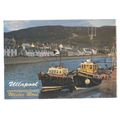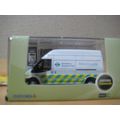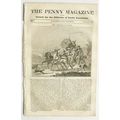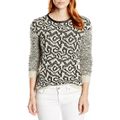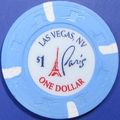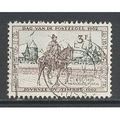Stieglitz, Alfred - The Coach - photograph - art postcard (US)
- Condition : Used
- Dispatch : 2 Days
- Brand : None
- ID# : 200320362
- Quantity : 1 item
- Views : 227
- Location : United Kingdom

- Seller : justthebook (+1703)
- Barcode : None
- Start : Wed 14 Apr 2021 19:31:57 (BST)
- Close : Run Until Sold
- Remain : Run Until Sold
More Listings from This Seller view all
Seller's Description
- Art Postcard
- Work of art title: The Coach [no date]
- Artist (if known): Alfred Stieglitz
- Media or other details: photography
- Publisher / Gallery: Pomegranate Publications (US) / Library of Congress
- Postally used: no
- Stamp & postmark details (if relevant):
- Size: Modern
- Notes & condition details:
NOTES:
Size: 'Modern' is usually around 6in x 4in or larger / 'Old Standard' is usually around 5½in x 3½in. Larger sizes mentioned, but if you need to know the exact size please ask as this can vary.
All postcards are not totally new and are pre-owned. It's inevitable that older cards may show signs of ageing and use, particularly if sent through the post. Any faults other than normal ageing are noted.
Stock No.: A1110
Please ask if you need any other information and I will do the best I can to answer.
------------------------------------------------
Postage and packing charge should be showing for your location (contact if not sure).
UK - PayPal, Cheque (from UK bank) or postal order
I will give a full refund if you are not fully satisfied with the postcard.
----------------------------------------------
Alfred Stieglitz HonFRPS (January 1, 1864 – July 13, 1946) was an American photographer and modern art promoter who was instrumental over his 50-year career in making photography an accepted art form. In addition to his photography, Stieglitz was known for the New York art galleries that he ran in the early part of the 20th century, where he introduced many avant-garde European artists to the U.S. He was married to painter Georgia O'Keeffe.
n 1884, his parents returned to America, but 20-year-old Stieglitz remained in Germany and collected books on photography and photographers in Europe and the U.S.[5] He bought his first camera, an 8 × 10 plate film camera, and traveled through the Netherlands, Italy and Germany. He took photographs of landscapes and workers in the countryside. Photography, he later wrote, "fascinated me, first as a toy, then as a passion, then as an obsession."[6]
Through his self-study, he saw photography as an art form. In 1887, he wrote his very first article, "A Word or Two about Amateur Photography in Germany", for the new magazine The Amateur Photographer.[7] He then wrote articles on the technical and aesthetic aspects of photography for magazines in England and Germany.
He won first place for his photography, The Last Joke, Bellagio, in 1887 from Amateur Photographer. The next year he won both first and second prizes in the same competition, and his reputation began to spread as several German and British photographic magazines published his work.[8]
In 1890, his sister Flora died while giving birth, and Stieglitz returned to New York.[3]
Photographer Eva Watson-Schütze urged him to establish an exhibition that would be judged solely by photographers[13] who, unlike painters and other artists, knew about photography and its technical characteristics. In December 1901, he was invited by Charles DeKay of the National Arts Club to put together an exhibition in which Stieglitz would have "full power to follow his own inclinations."[14] Within two months Stieglitz had assembled a collection of prints from a close circle of his friends, which, in homage to the Munich photographers, he called the Photo-Secession. Stieglitz was not only declaring a secession from the general artistic restrictions of the era, but specifically from the official oversight of the Camera Club.[15] The show opened at the Arts Club in early March 1902, and it was an immediate success.
He began formulating a plan to publish a completely independent magazine of pictorial photography to carry forth the artistic standards of the Photo-Secessionist. By July, he had fully resigned as editor of Camera Notes, and one month later he published a prospectus for a new journal he called Camera Work. He was determined it would be "the best and most sumptuous of photographic publications".[1] The first issue was printed four months later, in December 1902, and like all of the subsequent issues it contained beautiful hand-pulled photogravures, critical writings on photography, aesthetics and art, and reviews and commentaries on photographers and exhibitions. Camera Work was "the first photographic journal to be visual in focus."[16]
Stieglitz was a perfectionist, and it showed in every aspect of Camera Work. He advanced the art of photogravure printing by demanding unprecedentedly high standards for the prints in Camera Work. The visual quality of the gravures was so high that when a set of prints failed to arrive for a Photo-Secession exhibition in Brussels, a selection of gravures from the magazine was hung instead. Most viewers assumed they were looking at the original photographs.[1]
Throughout 1903, Stieglitz published Camera Work and worked to exhibit his own work and that of the Photo-Secessionists[8] while dealing with the stresses of his home life. Luxembourgish American photographer, Edward Steichen, who later would curate the landmark exhibit The Family of Man, was the most frequently featured photographer in the magazine. Fuguet, Keiley, and Strauss, Stieglitz’s three associate editors at Camera Notes, he brought with him to Camera Work. Later, he said that he alone individually wrapped and mailed some 35,000 copies of Camera Work over the course of its publication.[8]
By 1904, Stieglitz was again mentally and physically exhausted and decided to take his family to Europe in May. He planned a grueling schedule of exhibitions, meetings and excursions and collapsed almost upon arrival in Berlin, where he spent more than a month recuperating. He spent much of the rest of 1904 photographing Germany while his family visited their relations there. On his way back to the U. S. Stieglitz stopped in London and met with leaders of the Linked Ring but was unable to convince them to set up a chapter of their organization in America (with Stieglitz as the director).
Going to the Start (1905) by Stieglitz
On November 25, 1905, the Little Galleries of the Photo-Secession" opened on Fifth Avenue with one hundred prints by thirty-nine photographers. Edward Steichen had recommended and encouraged Stieglitz, on his return from Europe, to lease out three rooms across from Steichen's apartment that the pair felt would be perfect to exhibit photography. The gallery became an instant success, with almost fifteen thousand visitors during its first season and, more importantly, print sales that totaled nearly $2,800.[17] Work by his friend Steichen, who had an apartment in the same building, accounted for more than half of those sales.[1]
Stieglitz continued to focus his efforts on photography, at the expense of his family. Emmy, who hoped she would one day earn Stieglitz's love, continued giving him an allowance from her inheritance.[8]
In the October 1906 issue of Camera Work, his friend Joseph Keiley said: "Today in America the real battle for which the Photo-Secession was established has been accomplished – the serious recognition of photography as an additional medium of pictorial expression."[18]
Two months later the 42 year-old Stieglitz met 28 year-old artist Pamela Colman Smith, who wished to have her drawings and watercolors shown at his gallery. He decided to show her work because he thought it would be "highly instructive to compare drawings and photographs in order to judge photography's possibilities and limitations".[17] Her show opened in January 1907, with far more visitors to the gallery than any of the previous photography shows, and soon all of her exhibited works were sold. Stieglitz, hoping to capitalize on the popularity of the show, took photographs of her art work and issued a separate portfolio of his platinum prints of her work.[1]
Listing Information
| Listing Type | Gallery Listing |
| Listing ID# | 200320362 |
| Start Time | Wed 14 Apr 2021 19:31:57 (BST) |
| Close Time | Run Until Sold |
| Starting Bid | Fixed Price (no bidding) |
| Item Condition | Used |
| Bids | 0 |
| Views | 227 |
| Dispatch Time | 2 Days |
| Quantity | 1 |
| Location | United Kingdom |
| Auto Extend | No |




 for 1 item(s)
for 1 item(s)


![Van Gogh, Vincent - Sunflowers [4th] - National Gallery art postcard c.1960s](https://pic.ebid.net/upload_medium/2/7/0/1424731301-1918-150.jpg)




